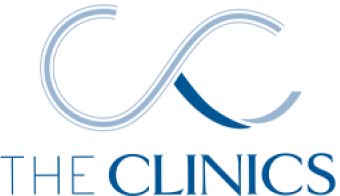
Rhinoplasty
Rhinoplasty, also known as a “nose job,” is a surgical procedure to alter the size and shape of the nose for aesthetic or medical reasons.

What is Rhinoplasty?
Rhinoplasty, also known as a “nose job,” is a surgical procedure to alter the size and shape of the nose for aesthetic or medical reasons. There are two advanced techniques currently being used to perform nose surgery: closed rhinoplasty and open rhinoplasty.
Why Have Rhinoplasty?
The most common reason people have nose surgery is to improve the appearance of the nose. Rhinoplasty can make the nose more attractive from the front and the side, helping to achieve a more refined nasal tip and beautiful profile that better suits the face.
Rhinoplasty can also be performed for medical reasons, such as to correct deformities resulting from accident or injury, congenital or birth defects, or to improve a person’s breathing. For some patients all these concerns can be addressed at the same time.
Revision rhinoplasty may be necessary if the patient is dissatisfied with the result of previous procedures or has experienced complications. This type of surgery is a little more complicated because the patient may have anatomical changes such as scar tissue and loss of cartilage.
FAQ’s
Is rhinoplasty painful?
You won’t feel any pain during the surgery as it’s performed under general anesthesia. After the first few weeks following surgery you may experience some pain, discomfort and swelling. You will be prescribed medication to help keep you as comfortable as possible.
What’s the difference between closed and open rhinoplasty?
Closed rhinoplasty is an internal approach that is the more common of the two. With this method all the incisions are carefully hidden inside the nose, with no visible scarring on the outside. The surgeon accesses bone and cartilage by making incisions inside the nostrils and lifting the skin. The biggest benefit for the patient is less downtime and easier recovery.
Open rhinoplasty is an external approach where all the incisions are placed outside the nose. When performed by a highly skilled surgeon, scars are barely noticeable once the nose is fully healed. Open rhinoplasty allows the surgeon to make more extensive changes than with closed rhinoplasty. The recovery time is also a little longer with this technique.
What are the complications of rhinoplasty?
Like with any surgery, rhinoplasty may result in complications such as infection, bleeding, scarring and reaction to the anesthesia. It’s also possible to be dissatisfied with the results or require revision rhinoplasty. For this reason it’s very important to choose a qualified and experienced surgeon.
Rhinoplasty Quick Facts:
| Cost of Rhinoplasty | TBD |
|---|---|
| Duration of Surgery | 1-4 hours |
| Hospital Stay Required? | No |
| Stitches Removed | 5-7 days |
| Days of Social Downtime | 2-3 weeks |

What to Expect Before Surgery:
Follow pre-operative instructions: You will be provided with detailed pre-operative instructions by your surgeon. These may include avoiding medications that promote bleeding, making sure you have all the medications you’ll need post-operatively and when to stop eating and drinking the night before.
Arrange for help: You will need someone to pick you up from the clinic or hospital and take you home. Having someone nearby to help you with basic tasks and medications for the first few days following surgery is recommended.
Plan for your recovery: Downtime may take a few days to several weeks. Make sure to take adequate time off work as necessary. You should also designate a quiet, comfortable place to recover for the first few days.
The Ideal Candidate for Rhinoplasty
The ideal candidate for a nose job is someone who has concerns about the size, shape or function of their nose. These may include a dorsal hump, asymmetry or deviation, wide or narrow nostrils, droopy tip and and/or breathing difficulties. Here are some other factors to consider
Good overall health: A person should be in excellent health and a non-smoker. This includes having no serious physical conditions that could affect the outcome or be a contraindication to surgery and general anesthesia.
Facial growth is fully developed: Patients whose facial bones are still growing are advised to wait at least until the age of 15 for females, and 16-18 for males.
Have realistic expectations: A clear understanding of what can and cannot be achieved with rhinoplasty can ensure that an individual is happy with the results. The surgery can improve a person’s self-esteem and confidence; however, it will not fix underlying mental health issues such as body dysmorphia.
Be committed to recovery: Rhinoplasty recovery can take several weeks, months and even longer to be fully completed. Initial bruising and swelling will mostly subside after a few weeks. Residual swelling can last even longer, with final results visible after 6-12 months.
How to Prepare for Rhinoplasty
Do your research: A consultation and medical evaluation with a qualified Plastic Surgeon is the first step in preparing for Rhinoplasty. During your initial meeting you can learn more about the procedure, discuss your nasal anatomy and treatment objectives. The surgeon may use technology such as computer imaging to give you a visual preview of your potential results.
Quit smoking: If you’re a smoker it’s best to quit smoking at least six weeks in advance. Nicotine and other chemicals in tobacco can constrict blood vessels and impair your body’s ability to heal adequately post surgery.
After Surgery:

Downtime and recovery:
Each person experiences the recovery period differently. Your unique healing journey will be based on your nasal anatomy and specific type of surgery. Below are some general guidelines for what you can expect

1 Day Post-Op
You may experience some pain, discomfort, and swelling between the eyes and nose shortly after surgery. You will be prescribed pain medication to keep you comfortable. You will wake up from the anesthesia with nasal packing, splints and nasal cast to support your nose during healing

1 Week Post-Op
Make sure to get plenty of rest during the first week. Avoid strenuous physical activity, bending over, lifting heavy objects or anything that can cause a spike in blood pressure. Follow post-care instructions carefully to keep your nasal passages clear and prevent them from drying out. Eating softer foods will help minimize pressure and discomfort to the nose. Sutures and splints will be removed within the first 5-7 days after surgery.

2-3 Weeks Post-Op
Swelling will continue to subside and you may return to work and other social activities at this time. You can also resume gentle exercise such as walking, biking or yoga. Ask your surgeon when you can resume more strenuous forms of exercise

Long-term recovery
It can take up to a year in some cases for all the swelling to fully subside and the nose to settle into its final shape. External incisions will take time to heal, becoming less noticeable over time. Breathing through your nose will also gradually improve
ELEGIBILITY Who is a Good Candidate
We invite you to book a consultation with one of our expert plastic surgeons to find out if rhinoplasty is right for you.




